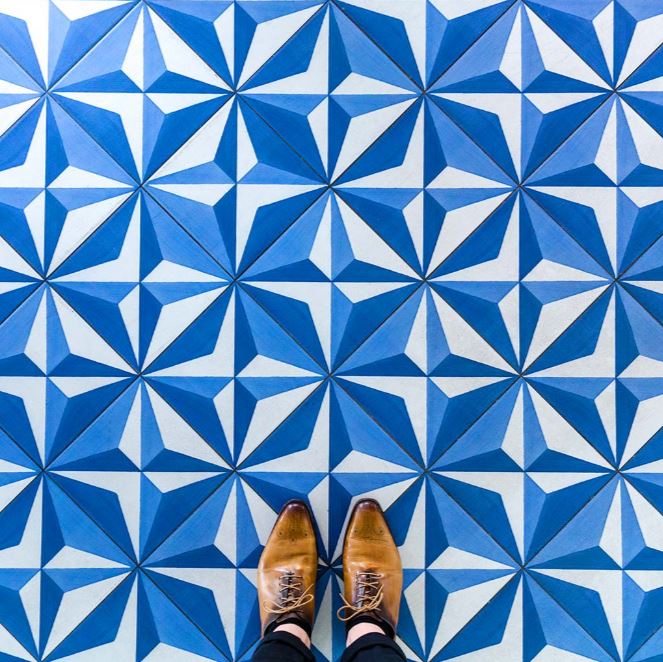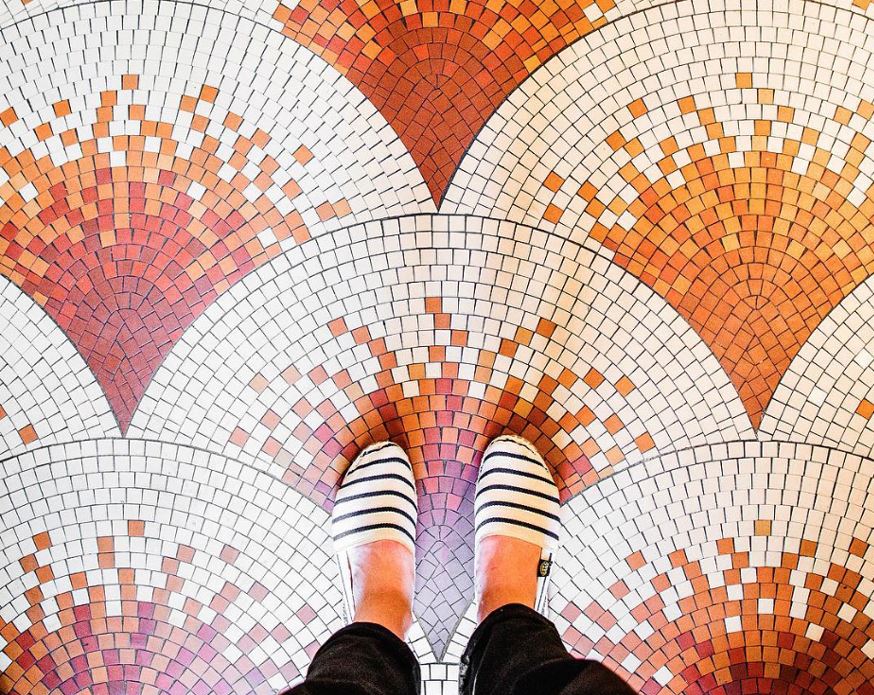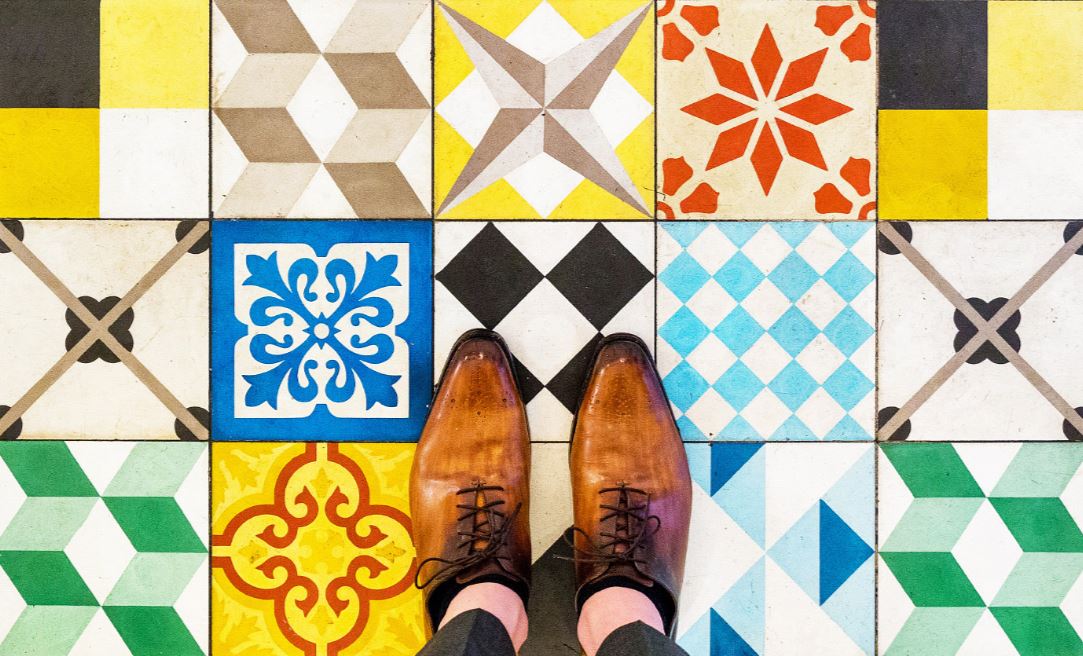-
Phone Number
-
Email Address
I remember an architectural historian telling me that when smaller was the mosaic on the floor, on the walls, the ceiling or even in the garden of a housing, the more money the family that inhabited the house had home at the time.
In the same way, in the drawings of the tiles hydraulics and their colors, due to the fact that more manual processing was required when treating the decorative tiles with their cements pigmented as in execution and setting in construction. Since then I always add a pinch of imagination when I see a building with mosaics of quality.

The truth is that it is a pleasure to observe them!… A thousand figures with
Content menu:
This is where German photographer Sebastian comes in. Erras that reminds us of the beauty of the pavement that we tread, its geometry, its drawings and figures with a series photographs that frame the world of hydraulic soil, its variants and perfection of the mosaic floor of time from a different and unique perspective, combining his great passions, shoes and architecture at ground level zero.

In all his photographs he combines the splendor of a wonderful soldier with his shoes claiming the beauty of those we walk on.


Erras is traveling around the world to show us the richly toned tiles and pottery of the most avant-garde cities such as Barcelona or London, to the intricate floors of Venice or the hydraulic mosaic of the mid-nineteenth century of the Bourgeois France. An architectural richness that undoubtedly deserves your attention.

Shinier or less shiny floor tiles, with more or less colors, with curved, straight, symmetrical shapes or simply drawings spectacular framing the interior and exterior of many of the great buildings of our cities or the interior design of the wealthy and wealthy residences of the time without waste the old flavor.
A luxury in modern times!... Where many times we we focus more on modern materials instead of rescuing the pure essence of those handmade floors by the hands of an expert craftsman who provide us with colorful floor tiles almost perfect.

Subtly uses the Instagram platform to show the world his work that began in Paris with the Parisian Floors series.
After photographing some 250 hydraulic soils in Paris he has been hopping from city to city in search of geometric figures and bright colors full of charm from the most interesting streets to unexpected buildings, a long journey that brings us some wonderful photographs with a lot of charm and uniqueness that go beyond the typical patterned tiles to pure art.
In fact, each week brings us a new source of inspiration and ideas to the delight of all users.
As I point out, we leave a good video about the process of manufacturing and how tiles are made hydraulics that shows long manual work, which at the time it was cheap and now these guys are soils are relatively expensive depending on the geometry and colors increases in relation to industrial ceramics traditional, although undoubtedly and as many would comment, they are for life!
The hydraulic type tiles are manufactured piece by piece. The artisan chooses the colors to use and prepare a paste with water, mixing white marble powder, white cement, sand and pigments.
This preparation is poured into the template, which is no other something that a mold that integrates some bronze separators or brass in a boxed frame. Every space is filled with color correspondent. The colors form the drawings that you will have the cobblestone, so the cost of the piece will increase. This layer, it will be visible when it is placed, it has about 4-5 mm. of thickness.
In the following video we will see how to make this handmade tile that requires manual work important, hence, that its current market price is high.
The steps to follow and how to do them: When the template is filled with different colored pastes, a second layer is added of a similar thickness, consisting of a mixture of cement gray and sand, which has the function of absorbing excess water from the first Finally it is filled up to 20 or 25 mm. which is usually the thickness of the tile, with the grease or support layer that was made on top of gray cement, cement and sand, with a more porous texture to facilitate grip on its placement.
Why is it called hydraulic tile, mainly it is by the pressing process whose filled mold is placed in a hydraulic press that is compressed. Afterwards, he withdraws of the mold, and it is allowed to dry, and later it is immersed in water for 24 hours. For the cement to set properly, the tiles are sprayed with water and kept in a humid chamber for 28 days.
To remember why it's called hydraulic soil there are to take into account that the beginnings and antecedents go back to the Italy of the 17th and 18th centuries where the marble tiles with a more basic technique but with truly amazing results.
A little later he moved on to industrialization in France in as for a more formal design, where its main characteristics was the richness and lively chromaticism of its drawings. Until the middle of the 20th century, the 1960s, with a important decline and almost the disappearance of the technique by the introduction into the market of the famous "terrazzo" from Italy with low prices, one more manufacture industrialized, easy to install and a less maintenance that has also commonly been called hydraulic terrazzo .
The recovery of the technique has been fostered by large architecture firms that have used the beauty of these formidable pieces in the most avant-garde modern architecture and interior design incorporating and recovering techniques, new forms, molds and drawings.
We want to review at what point in the world of types We are lonely. The soils are classified to prior into three large groups: soft, medium and hard. The cleaning procedures and pros and cons vary according to its characteristics mainly derived from the type of materials.
From their history, we can verify that they can be used outdoors in areas where there are no sudden temperature changes or for interiors in all the areas of the house, for bathrooms or kitchens, for stairs, in public spaces such as sidewalks or squares due to their resistance but always taking into account the temperature.
As a note, and so you can see how the ceramic world. You can look at the innovative ceramic magnetic that revolutionizes the technique of laying tiling or flooring in rooms.
Keep in mind that there are some advantages to its use and use of the "hard" pavements of these artificial soils in relation mainly to those that They are made of clayey material.

They are hard underfoot and cold. They work very well compression but in case of strong traction they can produce cracks. They are expensive in relation to a standard manufacture and Although it may not seem like it, in relation to a ceramic it adds weight to the structure. We must take care of the porosity of the pieces with waxes and other special products.
After a while they can acquire porosity, with which it is necessary to apply sealing and cleaning treatments that prevent dirt from being embedded in the pores. certain of These treatments are crystallized, waxed or polished but we have to remember that every day they appear new products to treat, maintain and improve hardness.
It is advisable to clean them with water and neutral products, if They accept most cleaning products well.
We leave a modern catalog of an architecture office to see the versatility in designs:
Some articles of interest: